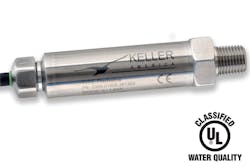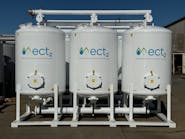With the emergence of safety concerns over water quality in public water supplies, municipalities are making strides to better conform to preexisting and amended safety regulations.
Originally passed in 1974, the Safe Drinking Water Act prohibited the use of solder, flux and piping that were not defined as “lead free” in distribution systems providing water for human consumption. The term “lead free” did not mean the 100-percent absence of lead but rather was defined as allowing lead up to certain maximum amounts. Then in 1996, the Safe Drinking Water Act was amended to include “lead leaching” standards for any item that was to be in contact with drinking water. These standards made it possible to have these items tested by independent third-party labs in order to determine compliance.
The Lead and Copper Rule (LCR), enacted in 1991, aimed to further reduce the acceptable amount of lead and copper by setting limits as measured at the customer tap. Subsequently, in 2011, the Reduction of Lead in Drinking Water Act was passed. It tightened the standards for allowable lead content while simultaneously granting exemptions to certain existing lead prohibitions and eliminating language concerning compliance with third-party standards.
Acculevel is a high-accuracy analog digital submersible level transmitter from Keller that is NSF 61 & NSF 372 approved.
For years after these federal regulations took effect, a majority of, but not all, entities to which these standards would apply took an if-it-ain’t-broke-don’t-fix-it attitude. However, more recent occurrences of problems with public water supplies (e.g., high lead content detected in Flint, Mich., in 2014) served to heighten public awareness of the possibility that some public water systems might be non-compliant with the regulations.
The resultant re-focus on drinking water safety has an increasing number of public water suppliers taking greater strides to monitor and evaluate their systems and retrofit with equipment that complies with the standards, where necessary. Local inspectors police installed products in order to ensure compliance with the current iterations of the two original standards. In addition, state and local standards that complement the federal standards may apply to the particular locality, including compliance with NSF International standards, such as NSF 61 and NSF 372.
Preciseline is a high-accuracy analog and digital output pressure transmitter that is NSF-61 & 372 approved.
NSF 61 mandates that items in contact with drinking water be free of all toxic materials, e.g., carcinogens. NSF 372 concerns lead only. If those standards are applicable to a local installation, then any item being considered for installation should bear markings from certified third-party entities, such as NSF, UL or others, which indicate compliance with safe drinking water standards. Manufacturers of such items have a responsibility to ensure compliance with NSF 61 and 372. Items such as piping and valves are obvious candidates to which the NSF standards apply. Less obvious are pressure and level transmitters which provide critical input to the control systems.
To date, Keller America is one of the very few manufacturers who have been granted NSF 61 and 372 approvals for both submersible as well as non-submersible level and pressure transmitters. WW
Keller is exhibiting at ACE19, booth 936. Learn more at www.kelleramerica.com.
Circle No. 276 on Reader Service Card





